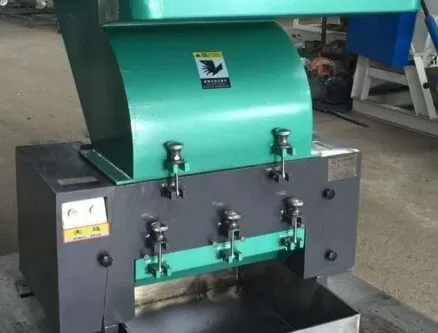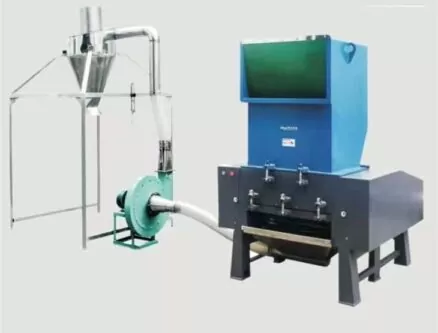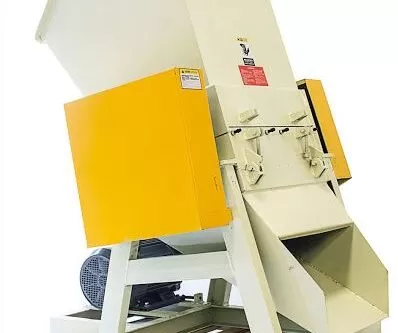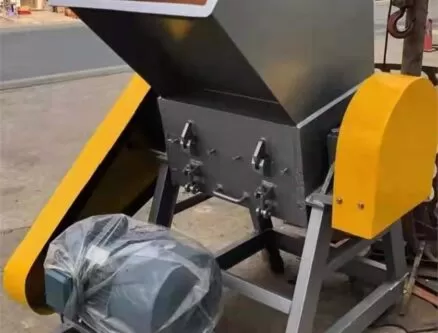Plastic waste is piling up. Landfills are overflowing, oceans are choking, and we’re running out of time. If you’re like me—running a plastic shredding machine company—you know slow plastic crushing means slower progress and shrinking profit margins. That’s a problem. A frustrating, expensive, and very loud problem. But there’s a solution—one that doesn’t involve smashing bottles with your boots or yelling at jammed machines (yes, I’ve been there).
You can crush plastic quickly by using industrial-grade shredders with high-torque, low-speed motors or fast rotary granulators, depending on your plastic type. Proper pre-sorting, drying, and size reduction steps like pre-cutting or compaction can speed up the entire process. It’s all about matching the right method to the right plastic.
Still here? Good. Because now we’re diving into the good stuff—machines, hacks, and maybe a little brute force.

Why does plastic take so long to crush?
You’d think plastic would be easy to break. It’s light, flexible, and soft, right? Wrong.
Different plastics have different melting points, densities, and tensile strength. PET bottles behave very differently from HDPE detergent jugs or PP buckets. Some resist shear. Others jam machines like they’re getting paid for it. Moisture and contaminants can also slow down the process by clogging blades and increasing friction.
According to a 2024 industry study on plastic recycling throughput, improper plastic preparation can reduce crushing speed by up to 37%. That’s time and money leaking out of your factory like a cracked soda bottle.
Which machines crush plastic the fastest?
Ah yes, the toys. As CEO of Amige, I’ve tested my fair share of plastic munchers.
For high-speed crushing, rotary granulators are beasts. These machines spin at high RPMs and slice plastic into fine granules in seconds. They love clean, pre-shredded plastic.
Single-shaft shredders, on the other hand, are slow but mighty. Perfect for thick plastics like drums or automotive parts. They grind rather than cut—think slow chewing rather than snipping.
We use twin-shaft shredders for mixed waste. They’re slow-ish, but their throughput is consistent. If speed is your goal, go for pre-shredders + rotary granulators. This combo is like a tag team—first you soften the enemy, then you finish them fast.

What prep steps help plastic crush faster?
Let’s talk foreplay. Crushing plastic is 90% prep and 10% crunch.
- Pre-sorting is essential. Mixing PET and PVC? You’re inviting disaster. PVC can ruin the whole recycling stream and damage the machine.
- Drying is another overlooked step. Wet plastic clumps together and slows blade rotation.
- Cutting or compacting bulky pieces reduces resistance during shredding.
- And yes, label removal matters. Sticky labels clog filters faster than you’d think.
According to our own internal trials, just drying the plastic beforehand increased throughput by 22%.
Should I crush by material or by shape?
Both. Let me explain.
Material defines how hard it is to cut. Shape defines how it moves through the machine.
Thin films like LDPE bags? They float, jam, and tangle. You’ll want a film crusher or a friction washer with a vacuum system.
Hollow containers like bottles or jugs? They bounce. That’s why I recommend pre-perforation. Just poke a few holes, and the air escapes. Less bounce = smoother crushing.
Sheets or boards (like PS foam)? You might need a hot wire cutter before mechanical grinding.
Pro tip: always separate soft from rigid. A blend of films and bottles is like mixing spaghetti with knives.
Can temperature affect crushing speed?
Yes. And no. It depends on what we’re talking about.
If plastic is too cold, it becomes brittle, which helps with crushing—especially for rigid plastics like ABS or PC. That’s why cryogenic crushing exists (yes, we’re talking liquid nitrogen). But unless you’re NASA, you won’t need it.
If plastic is too hot, blades gum up. Machines overheat. You risk deformation rather than cutting. The sweet spot is ambient temperature, around 20–25°C. Stable, dry, and non-tacky.
One Japanese study on temperature-controlled recycling noted a 15% improvement in crushing efficiency under optimized conditions).

What’s the fastest plastic to crush?
Easy: PET bottles, especially if pre-perforated and label-free.
They’re thin, rigid, and predictable. Our Amige PET bottle shredder can process up to 1.5 tons per hour, and that’s not even our premium model.
Second place? HDPE detergent bottles. A bit thicker, but still friendly.
Worst? LDPE film. They’re clingy, messy, and jammy. Like that one friend who won’t leave after the party ends.
Is manual crushing ever worth it?
Only if your idea of a workout is stomping on bottles in a warehouse.
Manual crushing is great for household-scale recycling or pre-treatment in micro-factories. But in industrial settings? Don’t bother.
Even small-scale recyclers are now opting for tabletop granulators or pedal-powered shredders. They’re faster, safer, and much less backbreaking. Trust me—your knees will thank you.
How can I automate my plastic crushing process?
Now we’re talking.
Full automation isn’t just a dream—it’s where the industry is headed. Here’s how we at Amige build smart systems:
- Conveyor-fed shredders with metal detection.
- Optical sorters before crushing to separate colors or resins.
- Humidity control systems to ensure dry input.
- PLC-controlled shredding lines that self-regulate speed and torque.
Our newest line even features AI-based blade wear detection, reducing downtime by 28%.
If you’re serious about speed, go smart.

What’s the best layout for a fast crushing plant?
Layout is half the battle. Here’s my tried-and-tested flow:
- Receiving area – with manual inspection and weighing.
- Pre-sorting station – separate by resin and color.
- Pre-shredder – break down bulky pieces.
- Dryer or air separator – reduce moisture and debris.
- High-speed granulator – fine crushing.
- Silo + bagging system – for clean output storage.
Keep machines close, but not crowded. Use gravity flow where possible. And never, ever skip maintenance zones.
Efficiency isn’t just about the machines. It’s about the flow between them.
What can go wrong if I rush crushing?
Speed is great—until it isn’t.
Push too hard, and you’ll:
- Overheat motors
- Snap blades
- Block hoppers
- Reduce lifespan of machines
- Jam your entire line
Trust me, we’ve had clients turn their shiny new granulators into overworked wrecks in just weeks. Speed must be balanced with process control. Think of it like racing a car—fast is fun, but not when your wheels fly off.
Conclusion
To crush plastic quickly, you need the right tools, smart preparation, and zero tolerance for clutter or moisture. At Amige, we’ve built our business on turning plastic into profit—fast. If your machine’s slow, it’s not your plastic—it’s your process.
